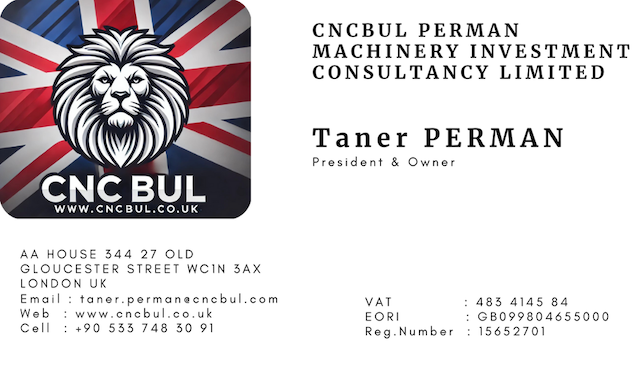What is Machine overhaul?
General Overview of Machine Overhaul
Machine overhaul refers to the comprehensive process of restoring a machine to its optimal operating condition. This involves a thorough examination, cleaning, repair, replacement of worn parts, reassembly, and testing. Overhauling is essential for extending the machine’s lifespan, improving its performance, and ensuring reliability. Here’s a detailed look at the process:
Key Steps in Machine Overhaul
- Inspection and Assessment: A detailed inspection to identify worn, damaged, or outdated components.
- Disassembly: The machine is carefully disassembled to access all components.
- Cleaning: All parts are thoroughly cleaned to remove dirt, grease, and debris.
- Replacement of Parts: Worn or damaged parts are replaced with new or reconditioned components.
- Reassembly: The machine is reassembled with precision, ensuring all components are correctly aligned.
- Testing and Calibration: The overhauled machine is tested and calibrated to meet original specifications.
- Documentation: Detailed records of the overhaul process, including replaced parts and tests performed, are maintained.
Machine Overhaul: From Universal Machines to CNC Machines
Universal Machine Overhaul
Universal machines, such as conventional lathes, milling machines, or grinders, often require overhauls to maintain accuracy and reliability. The process involves:
- Mechanical Components: Inspection and replacement of mechanical parts like gears, bearings, and lead screws. The bedways and slides are re-scraped or re-ground to restore precision.
- Electrical Systems: Checking and updating electrical components, including wiring, switches, and motors. Any outdated electrical systems are replaced with modern equivalents.
- Hydraulic and Pneumatic Systems: Overhauling hydraulic and pneumatic systems, including the replacement of seals, hoses, and valves.
- Lubrication Systems: Ensuring the lubrication system is functioning correctly, replacing oil and filters as needed.
- Safety Features: Updating safety features to meet current standards, ensuring the machine operates safely.
CNC Machine Overhaul
CNC (Computer Numerical Control) machines are more complex than universal machines, requiring additional steps in the overhaul process:
- Mechanical Components: Similar to universal machines, but with a focus on the precision of linear guides, ball screws, and spindle bearings.
- Control Systems: Updating or replacing CNC control units, including the CPU, memory, and interface modules. This ensures compatibility with modern software and enhances performance.
- Servo Motors and Drives: Inspection and replacement of servo motors and drives, which are critical for precise movement and positioning.
- Software Updates: Installing the latest software updates and ensuring the machine’s firmware is up to date.
- Electrical Systems: Comprehensive check and update of the electrical systems, including the control cabinet, power supply, and wiring.
- Calibration and Testing: Precision calibration of all axes, ensuring the machine meets the original specifications. Testing the machine under load to verify its performance.
Specialized Overhaul Processes
Precision Overhaul for High-Accuracy Machines
For machines that require extremely high accuracy, such as those used in aerospace or medical device manufacturing, the overhaul process includes:
- Advanced Metrology: Using high-precision measuring tools and techniques to ensure the accuracy of each component.
- Temperature Control Systems: Inspecting and upgrading temperature control systems to minimize thermal expansion and maintain tight tolerances.
- Vibration Analysis: Conducting vibration analysis to identify and mitigate sources of vibration that could affect accuracy.
Retrofitting During Overhaul
Retrofitting involves upgrading older machines with new technology, providing benefits such as increased automation, improved performance, and enhanced safety. This process can include:
- CNC Retrofitting: Converting a manual machine to CNC, involving the installation of CNC controls, servo motors, and feedback systems.
- Automation Integration: Adding robotic loaders/unloaders, pallet changers, and other automation solutions to increase productivity.
- Data Integration: Implementing IoT sensors and connectivity for real-time monitoring and predictive maintenance.
Benefits of Machine Overhaul
- Cost Savings: Overhauling is often more cost-effective than purchasing new equipment.
- Extended Lifespan: Restoring a machine to like-new condition extends its operational life.
- Improved Performance: Enhanced precision and reliability improve overall production quality and efficiency.
- Safety and Compliance: Ensuring machines meet current safety standards and regulatory requirements.
Conclusion
Machine overhaul is a critical maintenance practice that restores equipment to optimal condition, enhances performance, and extends the lifespan of both universal and CNC machines. By following a detailed and systematic approach, including inspection, disassembly, cleaning, part replacement, reassembly, and testing, overhauling ensures that machines operate efficiently, safely, and reliably. This process not only saves costs but also aligns with sustainability practices by maximizing the use of existing resources.


